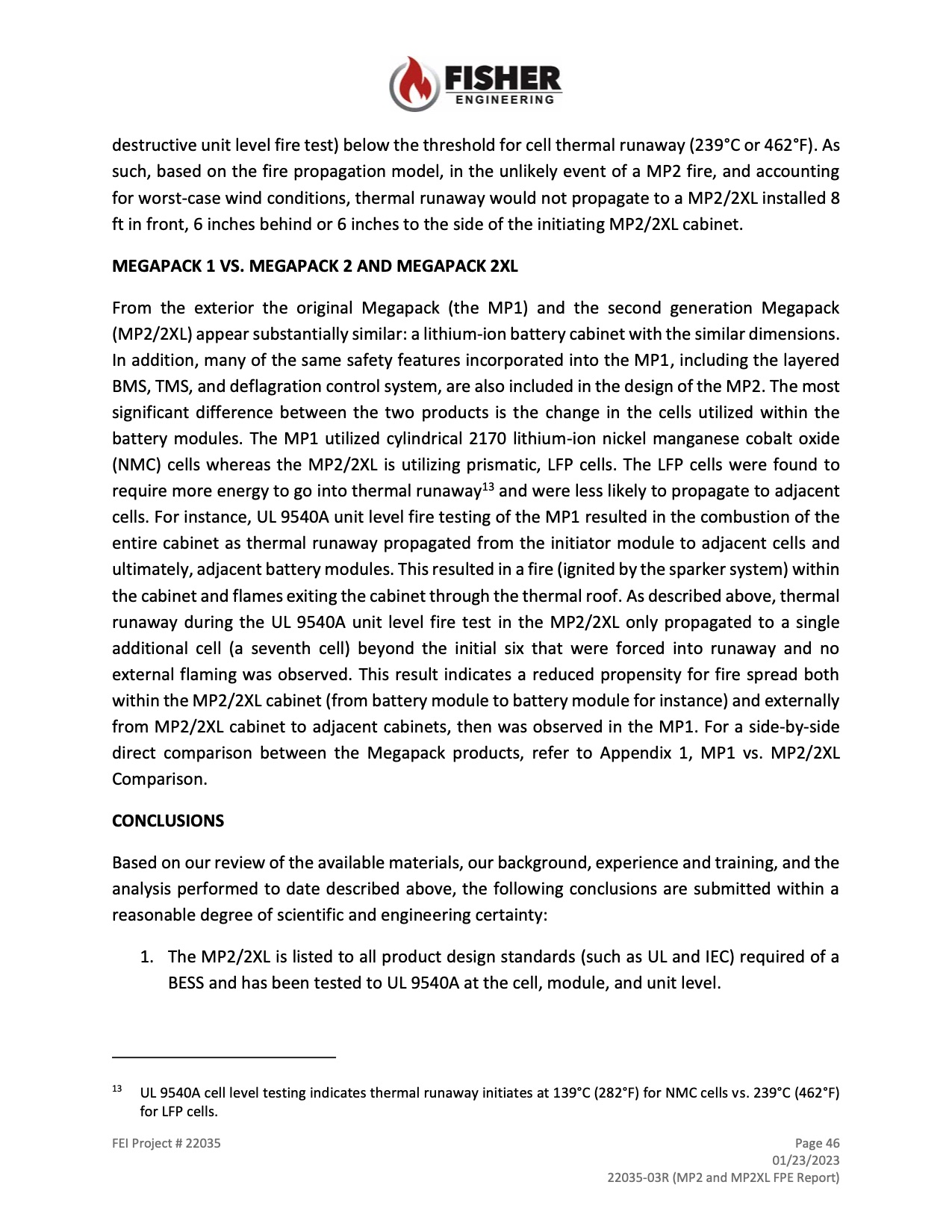
Page | 048 destructive unit level fire test) below the threshold for cell thermal runaway (239°C or 462°F). As such, based on the fire propagation model, in the unlikely event of a MP2 fire, and accounting for worst-case wind conditions, thermal runaway would not propagate to a MP2/2XL installed 8 ft in front, 6 inches behind or 6 inches to the side of the initiating MP2/2XL cabinet.
MEGAPACK 1 VS. MEGAPACK 2 AND MEGAPACK 2XL
From the exterior the original Megapack (the MP1) and the second generation Megapack (MP2/2XL) appear substantially similar: a lithium-ion battery cabinet with the similar dimensions. In addition, many of the same safety features incorporated into the MP1, including the layered BMS, TMS, and deflagration control system, are also included in the design of the MP2. The most significant difference between the two products is the change in the cells utilized within the battery modules. The MP1 utilized cylindrical 2170 lithium-ion nickel manganese cobalt oxide (NMC) cells whereas the MP2/2XL is utilizing prismatic, LFP cells. The LFP cells were found to require more energy to go into thermal runaway13 and were less likely to propagate to adjacent cells. For instance, UL 9540A unit level fire testing of the MP1 resulted in the combustion of the entire cabinet as thermal runaway propagated from the initiator module to adjacent cells and ultimately, adjacent battery modules. This resulted in a fire (ignited by the sparker system) within the cabinet and flames exiting the cabinet through the thermal roof. As described above, thermal runaway during the UL 9540A unit level fire test in the MP2/2XL only propagated to a single additional cell (a seventh cell) beyond the initial six that were forced into runaway and no external flaming was observed. This result indicates a reduced propensity for fire spread both within the MP2/2XL cabinet (from battery module to battery module for instance) and externally from MP2/2XL cabinet to adjacent cabinets, then was observed in the MP1. For a side-by-side direct comparison between the Megapack products, refer to Appendix 1, MP1 vs. MP2/2XL Comparison.
CONCLUSIONS
Based on our review of the available materials, our background, experience and training, and the analysis performed to date described above, the following conclusions are submitted within a reasonable degree of scientific and engineering certainty:
1. The MP2/2XL is listed to all product design standards (such as UL and IEC) required of a BESS and has been tested to UL 9540A at the cell, module, and unit level.
13
for LFP cells.
UL 9540A cell level testing indicates thermal runaway initiates at 139°C (282°F) for NMC cells vs. 239°C (462°F)
FEI Project # 22035 Page 46 01/23/2023 22035-03R (MP2 and MP2XL FPE Report)
|


